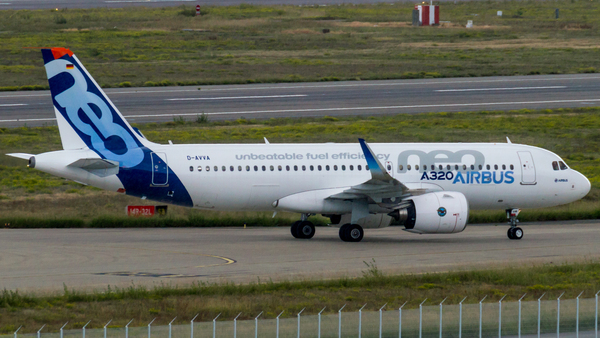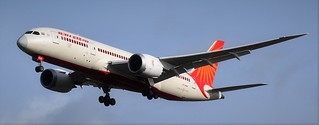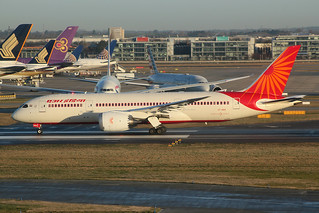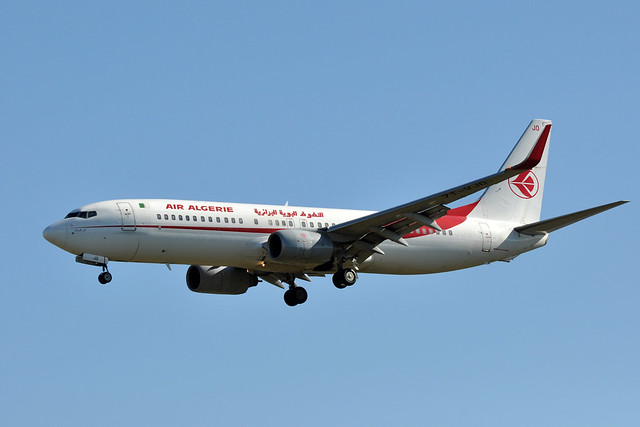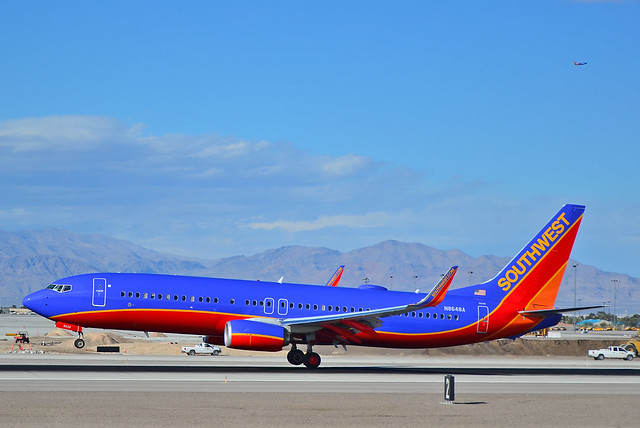Air India A319 at Mumbai on Dec 16th 2015, sucked engineer into engine during push back
Last Update: June 2, 2017 / 16:22:40 GMT/Zulu time
Incident Facts
Date of incident
Dec 16, 2015
Classification
Accident
Airline
Air India
Flight number
AI-619
Departure
Mumbai, India
Destination
Hyderabad, India
Aircraft Registration
VT-SCQ
Aircraft Type
Airbus A319
ICAO Type Designator
A319
A replacement Airbus A319-100 registration VT-SCX reached Hyderabad with a delay of 3:45 hours.
The airline is deeply saddened by and regrets the tragic event expressing their heartfelt condolences to the bereaved family. The incident is being investigated by India's DGCA.
India's DGCA confirmed a high level probe has been opened in the accident.
On Dec 17th 2015 India's UPWA (Unemployed Pilot Welfare Association) reported based on initial interviews with their collegues, that the aircraft was being pushed back from bay 28L at Mumbai Airport following a cross bleed engine start, when after the push back got finished the technician/engineer instructed a helper to remove the tow bar with the engineer (56) facing his tow truck and having the engines in his back, his headset was on. In the meantime the crew got taxi clearance, the captain queried with the first officer whether the aircraft was clear, the first officer affirmed, and the aircraft started to move forward with both engines operating. The engineer remained unaware of the aircraft starting to move and was sucked into the right hand engine, the helper, who just spotted the aircraft's movement in time, instantly sat down and was saved that way. The UPWA stated following crucial points: 1) No chocks were applied after push back had stopped, 2) no clearance signals had been issued releasing the aircraft for taxi, 3) lack of proper coordination between the two pilots and ground. The UPWA stressed: "Human Factors playing important role to have patience, avoid hurrying and follow SOPs."
On Jun 2nd 2017 India's DGCA released their final report concluding the probable cause of the accident was:
Non adherence to Standard Operating procedures (SOP) & delayed departure of flight due improper rostering of crew, resulted in the accident.
The DGCA reported the aircraft was being pushed back when both engines were started. After reaching the final push back position on taxiway B4, the park brakes were set to on. The captain asked the ground service engineer to disconnect the intercom headset, checked with the first officer for right hand side clearance, turned the taxi lights on and applied power for taxi. However, at this stage all four ground workers were still around the nose of the aircraft. The aircraft started to move, the ground service engineer stood facing back towards the aircraft with his headsets on his head. The right hand engine came very close to the engineer and sucked him in. All other ground personal ran away, the tow truck driver rushed the vehicle aside leaving the tow bar where it was. The nose gear hit the tow bar, the tow bar got stuck in the right and main gear wheels. The crew stopped the aircraft and shut down both engines. About 9 minutes later ground personnel connected their intercoms and advised the crew of the situation. The ground engineer, who was sucked into the right hand engine, died on the spot.
The DGCA analysed with respect to crew rostering:
Following are the salient observations regarding flight planning & crew scheduling:
i. As per PIC, the duty roster is available fortnight in advance but changes on day to day basis and sometimes hour to hour basis to avoid delays and cancellation of flight.
ii. The Mumbai- Rajkot- Mumbai (AI 655- AI 656) & Mumbai- Hyderabad-
Mumbai (AI 619- AI 0051) was operated by same cockpit crew. STA of Rajkot-
Mumbai was 14:40 UTC and flight reached bay V30 R at 15:05UTC whereas, STD of Mumbai- Hyderabad flight was 14:00 UTC. There was scheduled delay of 40 minutes in flight scheduling.
iii. As per Air India Ops Manual, the operating cockpit crew has to board the aircraft 20 minutes prior to scheduled departure for cockpit preparations and ATC clearances. However the cockpit crew in this case entered cockpit 07 minutes prior to commencement of pushback.
iv. PIC didn’t physically report to Dispatch for pre briefing of AI 619 flight and contacted dispatch over RT for the same while operating Rajkot-Mumbai flight AI 656.
v. The Rajkot-Mumbai aircraft was A320 whereas Mumbai-Hyderabad aircraft was A319.
vi. The copilot was undergoing SLF and was having 86 hours on A320 family.
With respect to the pushback and taxi procedures the DGCA analysed:
As per Air India Operations Manual the procedure “prior to taxiways” clearly mentioned that “the Captain must not release parking brakes until the mechanic/ marshaller has given thumbs up signal on the left/ right side, after start checklist is completed and ATC clearance has been obtained .
All actions must be deliberate and unhurried. There should be no hurry to taxi out. It must be ensured that the ground crew has moved away well clear and thumbs up signal has been obtained. The ground crew on their part must constantly inform the cockpit crew of all the things that are happening down below as an extensive portion below the nose is not visible from the cockpit. If any operation such as disconnecting tow bar etc. is interrupted or delayed, the ground crew must call up on the intercom and inform the Captain. In case of no communication with the ground crew for a reasonable period of time the cockpit crew should also make all attempts to re-establish communication by sounding the horn etc. If there is still no response from the ground, the ground/ apron control should be contacted on R/T. Avoid using ambiguous terminology. One person from the ground crew must be designated as marshaller and give thumbs up signal or at night with marshalling flash light wand and wait till the aircraft taxies out”.
As per Air India Engineering Service Ltd. Staff Notice 01 of 2015
The AMP on headset should inform cockpit crew, “PUSH BACK COMPLETED SET PARKING BRAKE ON” On his instruction, the AIATSL staff should install nose wheel chocks and confirm it to the AMP on headset. The AIATSL staff should disconnect the tow tractor, followed by tow bar. After the tow bar has been removed away from the nose wheels, the nose wheel steering deactivation pin should be removed by the AIATSL staff and same should be confirmed to the AMP on headset.
As per Caution in the notice, “the steering lockout pin should be removed only after the tow bar is disconnected and cleared off the nose wheels.”
The AMP on headset should give the hand signal for clearance and the AIATSL personnel should display the removed nose wheel steering deactivation pin for the aircraft to taxi out, only after all the equipment and persons are cleared of the aircraft and after ensuring that there is no obstruction in the path of the aircraft.
As per the warning in the notice, the AMP on the headset should make sure that when the aircraft moves with its power on the ground.
i. No persons are in the vicinity where the aircraft can cause them injury.
ii. No objects stay on any place where the engines can blow them away or can pull them into the engines by suction.
Circumstantial evidences indicated that the relevant SOP’s at various stages as indicated above were not adhered to by the cockpit crew and the AMP for pushback and taxi were not followed.
Incident Facts
Date of incident
Dec 16, 2015
Classification
Accident
Airline
Air India
Flight number
AI-619
Departure
Mumbai, India
Destination
Hyderabad, India
Aircraft Registration
VT-SCQ
Aircraft Type
Airbus A319
ICAO Type Designator
A319
This article is published under license from Avherald.com. © of text by Avherald.com.
Article source
You can read 2 more free articles without a subscription.
Subscribe now and continue reading without any limits!
Read unlimited articles and receive our daily update briefing. Gain better insights into what is happening in commercial aviation safety.
Send tip
Support AeroInside by sending a small tip amount.
Related articles
India A319 at Mumbai on Mar 28th 2016, tower reports smoke from landing gear
An Air India Airbus A319-100, registration VT-SCQ performing flight AI-620 from Hyderabad to Mumbai (India) with 120 people on board, had safely…
India A20N at Dubai on Dec 20th 2023, hard landing at 3.5G
An Air India Airbus A320-200N, registration VT-CIQ performing flight AI-933 from Cochin (India) to Dubai (United Arab Emirates), landed on Dubai's…
India A320 at Kathmandu on Nov 25th 2023, suspected tail strike
An Air India Airbus A320-200, registration VT-EXE performing flight AI-216 from Kathmandu (Nepal) to Delhi (India), was departing Kathmandu's runway…
India B772 over Iran on Nov 21st 2023, minor technical problem
An Air India Boeing 777-200, registration VT-AEI performing flight AI-119 from Mumbai (India) to New York JFK,NY (USA), was enroute at FL320 over…
India B788 at Mumbai on Aug 4th 2023, engine problems
An Air India Boeing 787-8, registration VT-ANW performing flight AI-131 from Mumbai (India) to London Heathrow,EN (UK), was climbing out of Mumbai's…
India B788 at Delhi on Jul 28th 2023, burst tyre on departure
An Air India Boeing 787-8, registration VT-NAA performing flight AI-143 from Delhi (India) to Paris Charles de Gaulle (France) with 200 people on…
Newest articles
Algerie B738 near Algiers on Apr 17th 2024, cracked window
An Air Algerie Boeing 737-800, registration 7T-VJO performing flight AH-1036 from Algiers (Algeria) to Lyon (France), was enroute at FL340 about…
Southwest B738 at St. Louis on Apr 19th 2024, engine failure
A Southwest Airlines Boeing 737-800, registration N8648A performing flight WN-5907 from St. Louis,MO to Sacramento,CA (USA), was climbing out of St.…
Subscribe today
Are you researching aviation incidents? Get access to AeroInside Insights, unlimited read access and receive the daily newsletter.
Pick your plan and subscribePartner

A new way to document and demonstrate airworthiness compliance and aircraft value. Find out more.

ELITE Simulation Solutions is a leading global provider of Flight Simulation Training Devices, IFR training software as well as flight controls and related services. Find out more.

Your regulation partner, specialists in aviation safety and compliance; providing training, auditing, and consultancy services. Find out more.
AeroInside Blog
Popular aircraft
Airbus A320Boeing 737-800
Boeing 737-800 MAX
Popular airlines
American AirlinesUnited
Delta
Air Canada
Lufthansa
British Airways
